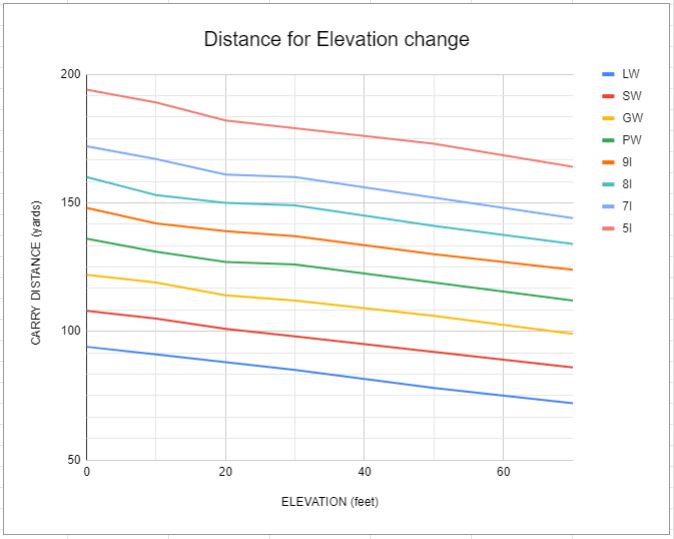I have just spent a little time on my designer-built practice range to come up with a small data set about the "distance v elevation" issue.
The experimental design was as follows: Hitting from flat fairway to flat green at various elevations above the golfer, <1 mph wind, using only P/P 100% swings and two replications. I only tested LW through 5I, because that is the main clubs you depend on to get close to the pin.
The data gave the graph below:

This is Carry distance only, I did not measure roll-out as that depends so much on slope.
I ran the numbers through an equation generating program, and as one could imagine from the nearly staight lines in the graph this gave a linear relationship;
D = D0 - .318 X (for LW, more later)
Where D is distance, D0 is distance at zero elevation change, and X is elevation change in feet.
You can see that for this data set the 3:1 ratio is a pretty good estimate (that would give .333 X).
This breaks down a bit however when you look at other clubs longer than LW:
| CLUB | COEFFICIENT X |
| LW | .318 |
| SW | .314 |
| GW | .324 |
| PW | .326 |
| 9I | .326 |
| 8I | .347 |
7I
5I | .385
.412 |
So the bottom line for this small experiment is that the 3:1 or 1/3 rule holds up pretty well from LW to 9I, but starts to break down some as you get to longer clubs.
When I get a little time I will probably do negative elevation, because I am not sure that will give the same results.